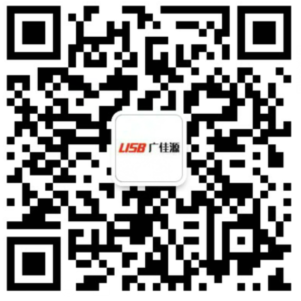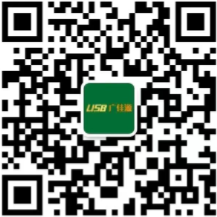 Mr. Chen:136-6225-2835
Mr. Chen:136-6225-2835
 Miss Chen:189-2385-0895
Miss Chen:189-2385-0895
Shenzhen Guangjiayuan Electronic Technology Co., Ltd
Mr. Chen: 136-6225-2835 (same WeChat account)
QQ: 979285705
Miss Chen: 189-2385-0895 (same WeChat account)
QQ: 2391552662
Chen Weiting :135-3824-4786 (same WeChat account)
Chen Weihao: 139-2459-4393 (same WeChat account)
Tel: 86-0755-33182327
Email: gjydz88@163.com
Website: www.usb-type.com
Address: Building 10, Hongxing Gebu Qixiang, Songgang Town, Bao'an District, Shenzhen, Guangdong Province
Is there a conflict between fast charging and fast data transmission? Do you support fast charging cables that can only be charged but cannot transmit data? Can fast charging and fast transmission be achieved simultaneously? What brands and models are recommended? What are the principles and standards for fast charging? Is it more related to the charging head or the cable itself? At present, there are probably so many issues that have been discussed by the cable engineering research and development team. Today, we will talk about the relationship between type-C and fast charging

When it comes to type-c and fast charging, we have to first mention micro USB and fast charging. In the case of poor battery life of mobile phones, improving the charging speed is a good solution. As we all know from physics, the key to improving the charging speed is to increase the charging power. Power (W)=Current X Voltage. The charger first reduces the mains voltage from 220V to 5V and outputs it to the phone's micro USB interface. Then, the phone's internal circuit is reduced to around 4.3V to charge the battery. There are a total of two depressurization processes in this.

Previously, the output voltage of the charger was 5V, and everyone was thinking about how to increase the current; But when it reaches 5V 2A, the bottleneck comes: an increase in current will inevitably cause a large number of micro USB interfaces and data cables to be unable to withstand it. Currently, the universal micro USB interface and our USB data cable can only ensure safe and efficient transmission at a current of 2A. If the current exceeds 2A, the hardware cannot tolerate it. So what should we do? At this moment, type-c appeared. The number of contacts in the type-c interface is several times that of the micro USB interface, which greatly increases the current intensity it can withstand; At the same time, type-C has added the step of mutual recognition, which can define itself as a charger or receiving device. In other words, USB type-C naturally supports fast charging, and the loss of USB type-C under the same current will be smaller. It can also support bidirectional charging. Although type-C naturally supports fast charging, it does not necessarily mean that using type-C necessarily supports fast charging, and fast charging chargers may not necessarily use type-C interfaces. Some manufacturers, due to cost and heat considerations, only use type-c but do not support fast charging. Since 2018, mobile phone fast charging has gradually increased from 18W to 40W or even higher, reaching 65W. This year, the mobile phone industry is expected to enter the era of 240W fast charging; New USB C interface specifications coming: supports up to 240W power and requires cable upgrade

Mobile phone charging is based on P (power)=U (voltage) × I (current), so the way to increase power is nothing more than to increase voltage or current and dynamically increase both. Qualcomm QC1.0 improves charging power by increasing current. However, charging mobile phones is not just about charging heads, but also about our old line of wires. In 2014, when Qualcomm wanted to continue increasing current in the QC1.0 direction to increase charging power, it found that it was no longer feasible. Because at this time, although Type-C data cables have been released, they are still far from widespread. Everyone is using micro USB 2.0 data cables, and their internal structure has limited their current carrying capacity. 2A is basically at its end. Based on this, USB IF has released a charging standard for USB Power Delivery (USB PD) based on Type-C interface in USB 3.1, which can provide up to 100W (20V/5A) of charging power, Intended to unify the charging standards for portable mobile devices. And everyone can obediently incorporate their own charging protocol into the USB PD protocol. Apart from USB IF being industry leaders, Google also stated that Android must support USB PD. What is USB-PD technology; Discussion on USB PD3.1 Fast Charging Specification

The 2017 USB PD3.0 is compatible with Qualcomm QC4.0/3.0, OPPO VOOC, Huawei FCP/SCP, and covers high voltage low current and low voltage high current. The voltage output range is 3.0V-20V, the voltage regulation range is 20mV, and the current ranges are 1.5A, 2A, 3A, and 5A.
In 2017, Qualcomm released QC4.0+, which improved dual Power management integrated circuit, intelligent Thermal equilibrium, advanced security features, etc. At the same time, it is compatible with USB PD 3.0 (PPS) protocol and Backward compatibility PD2.0, QC3.0, QC2.0, etc. After the release of the PD3.0 protocol, it means that a set of standards has been established.
The USB-PD protocol does not have the same relationship as other manufacturers' fast charging protocols, but rather includes and is included in the relationship. In the PPS (Fast Charging Technology Specification) released by USB-IF, the USB-PD 3.0 protocol already includes Qualcomm QC 3.0 and 4.0, Huawei's SCP and FCP, MTK's PE3.0 and PE2.0, and OPPO's VOOC; PD charging will eventually unify the fast charging world

Even when using fast charging mobile phones and fast charging heads, if non fast charging data cables are used, there is no fast charging effect. The material and number of core wires of the data cable will affect the maximum current that the data cable passes through, which in turn affects the charging power. Therefore, when selecting a data cable, it should choose a data cable with a pure copper core material and a large number of core wires. Generally, the design of fast charging data cables is 5C wire, and a woven structure is used to protect the internal cable cores, Generally, red represents the design as the positive electrode of the current to ensure the transmission of current. Currently, the thickest data line in the industry can be used with a 19AWG conductor, which makes it difficult to weld and the solder pad is prone to detachment. White and green represent the positive and negative data lines to ensure the transmission of data DATE. The blue design is the CC interface, responsible for supporting PD fast charging. Of course, to reflect the difference from ordinary data lines, There are often ground wire designs and the application of Kevlar wire to increase service life, depending on the price range provided by the customer. What causes the voltage drop? The line resistance plays a decisive role in the magnitude of the voltage drop.
As USB PD fast charging is becoming a fast charging solution for almost all Almost all, such as smart phones, laptops, Pads, cameras, game consoles, drones, etc., it has become a true "universal charger". Connectors that support fast charging, such as fast charging data cables, will gain more market share in the online cable industry, and everyone is waiting to see.
Source: Friends sharing circle in the cable industry
Contact person:
Mr. Chen 136-6225-2835 (same WeChat account)
Miss Chen 189-2385-0895 (same WeChat account)
Chen Weiting 135-3824-4786 (same WeChat account)
Chen Weihao 139-2459-4393 (same WeChat account)
Address:
Building 10, Hongxing Gebu Qixiang, Songgang Town, Bao'an District, Shenzhen, Guangdong Province
 |
 |
| Technology 1 | Technology 2 |